Press

"In this candid and engaging conversation, Ricardo Karam meets Andrée Sfeir-Semler, a pioneering gallerist whose influence has shaped the course of contemporary Arab art for four decades. From opening her first gallery in Kiel in 1985 to building a bridge between Hamburg and Beirut, she has given a platform to voices that might never have been heard."

"The Sfeir-Semler exhibition examines how power resides with those who can define what counts as noise, and what doesn’t."

"Du 11 avril au 1er août 2025, Mounira Al-Solh poursuit son exploration des mythes fondateurs dans son exposition Stray Salt, présentée à la galerie Sfeir-Semler de Downtown à Beyrouth. L’artiste recolore le mythe d’un regard résolument féminin et nous offre une vision novatrice de la construction des récits nationaux."
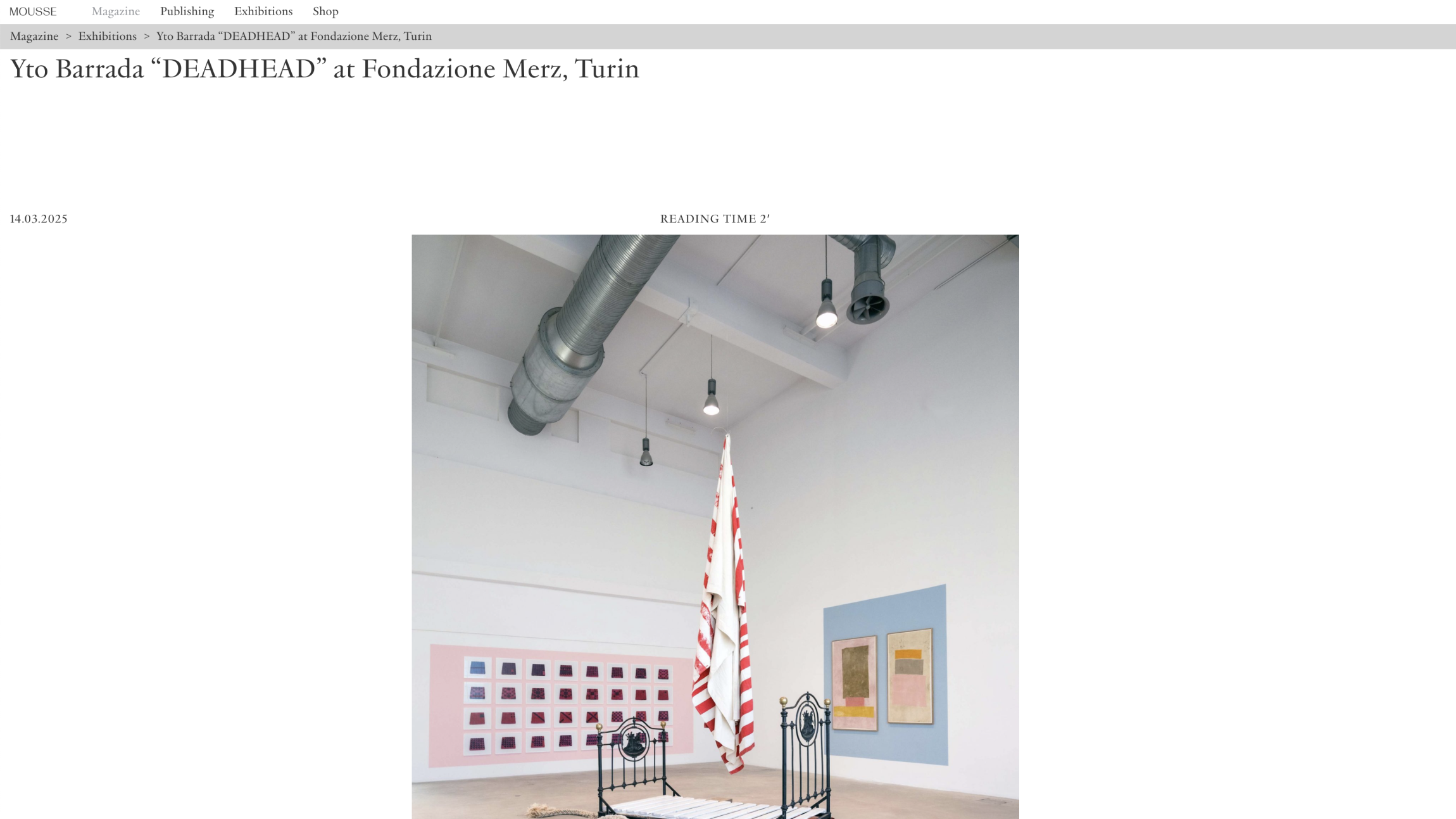
"The exhibition’s title, “DEADHEAD,” refers in part to the horticultural practice of removing dead flower heads to stimulate the growth of the entire plant. Taking up the notion of reducing to the essential, the show draws on a tight selection from Yto Barrada’s artistic oeuvre, including films, sculptures, installations, textiles and prints, some of which have been specially created for the occasion."

"At Fondazione Merz, Turin, the artist’s experimental works examine acts of making, foregrounding process over product"

"The artist’s film and performance challenge how Middle Eastern history is constructed and portrayed"
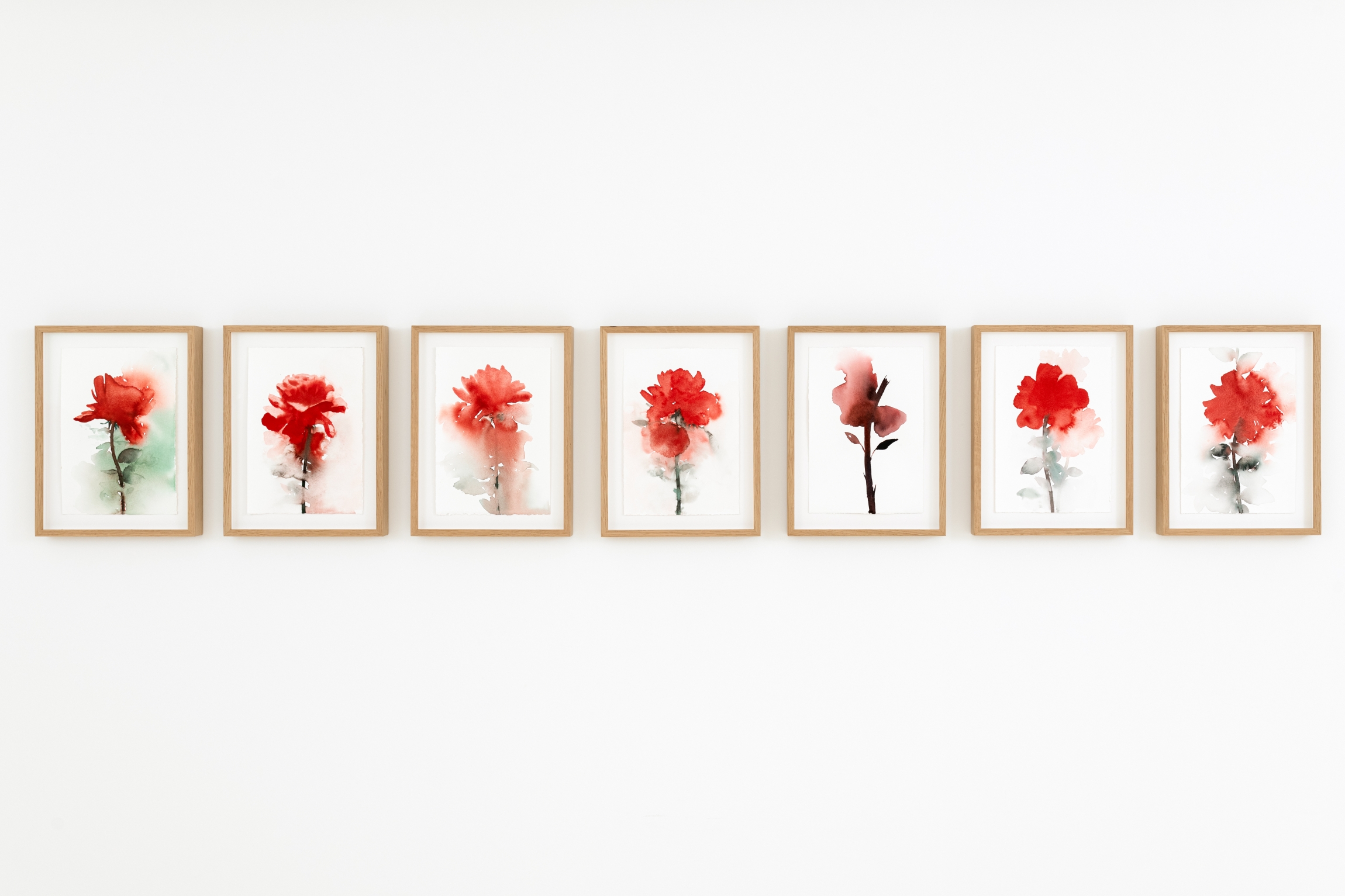
"Watching the war on Gaza in which he lost his sister, from his home in Paris, has been hard on Batniji. But he did resume work, and the recent destruction weighs on several pieces in his new show at the Sfeir-Semler Gallery in Beirut."

"Manipulant le temps comme une matière élastique, peuplant ses toiles et l’espace du poids de l’absence, évoquant Gaza, sa terre natale d’où il a été arraché, avec puissance et tendresse, l’artiste palestinien présente « Just in case », une exposition à ne pas manquer à la galerie Sfeir-Semler."
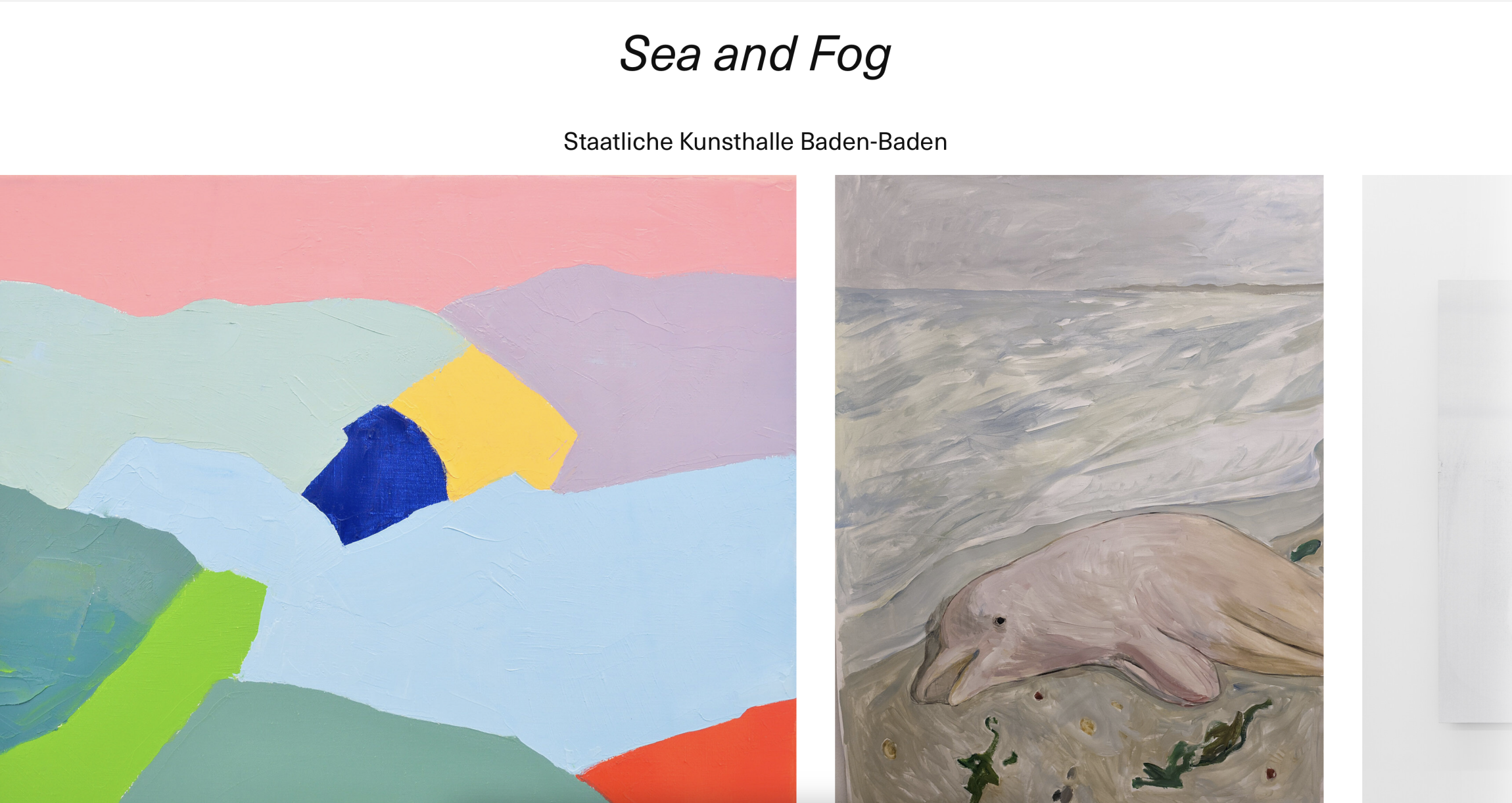
“Morning. Vast. Imprecision. Fog has covered everything in gray absolute. This has lasted. Doubts loom over the mind. Absence is harder to accept than death.” —Etel Adnan, Sea and Fog (2012)
On November 11, 1918, at five o’clock in the morning, the ceasefire was signed in a forest clearing near Compiègne, France, marking the end of four long years of the First World War. This war left its mark on all the subsequent ones, influencing warfare and militarism in terms of scale, technology, strategy, damage, and violence. Since then, the wars of one region have spread their political, social, economic, and psychological effects across the globe. One hundred six years after the end of this deadly war, the Staatliche Kunsthalle Baden-Baden presents the group exhibition Sea and Fog, inspired by the book of the same name by the artist and poet Etel Adnan (1925–2021). The exhibition reveals the multi-layered geographical and cultural interrelations that extend far beyond artificially drawn borders, nation-states, and geopolitics by examining the history of the World Wars and their impact on the ongoing wars.
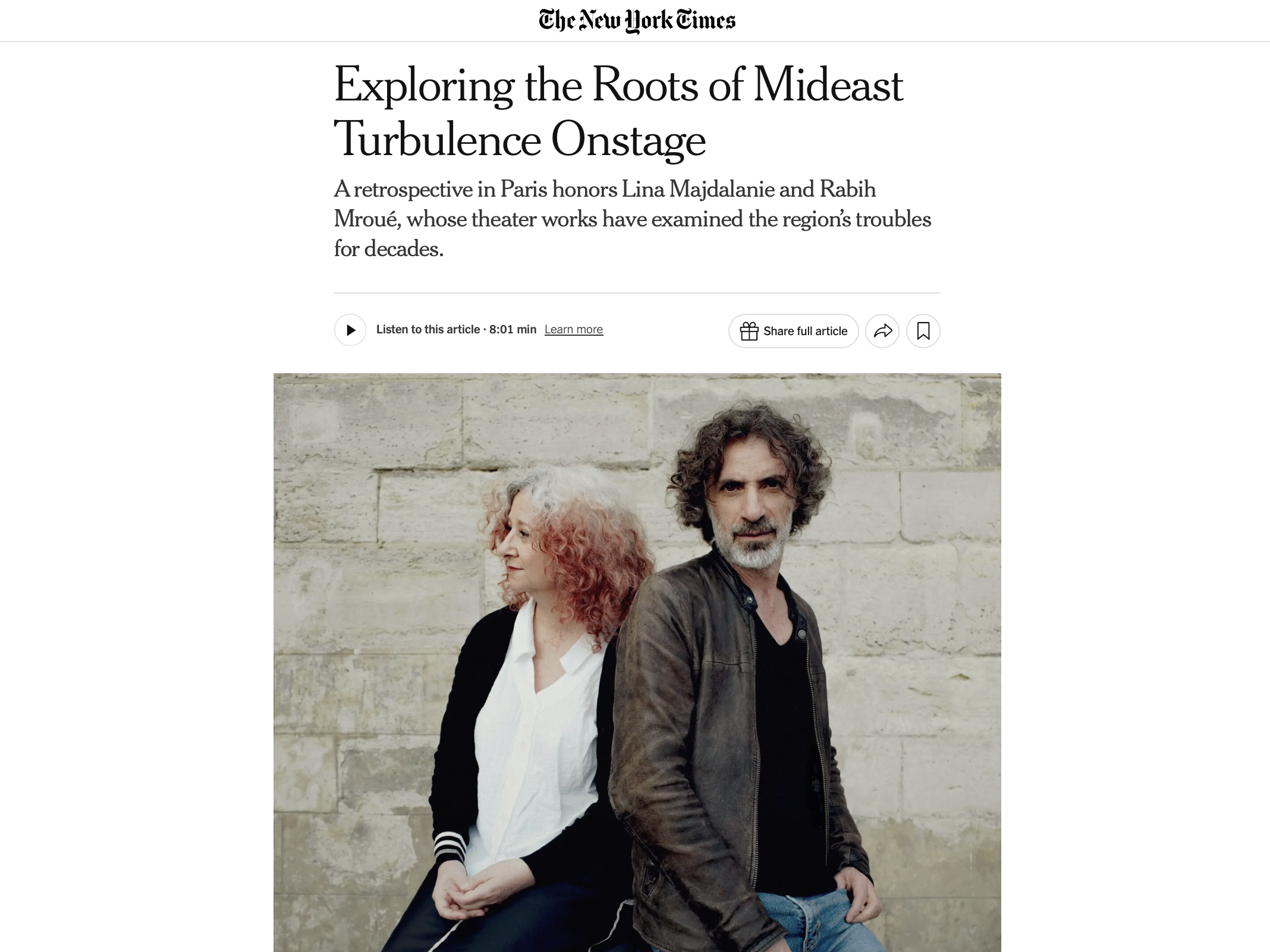
"A retrospective in Paris honors Lina Majdalanie and Rabih Mroué, whose theater works have examined the region’s troubles for decades."

"This fall and winter, the Lebanese theater maker and visual artist Rabih Mroué and his partner, the actress, director, and playwright Lina Majdalanie, will present a series of plays and nonacademic lectures as part of Paris’s annual Festival d’Automne. A major retrospective, the program includes many of Mroué’s cult-favorite performances, like Who’s Afraid of Representation? and The Inhabitants of Images. Playing host to the stage-related dimensions of his practice, the festival’s presentation will focus on Mroué’s extended engagement with language."
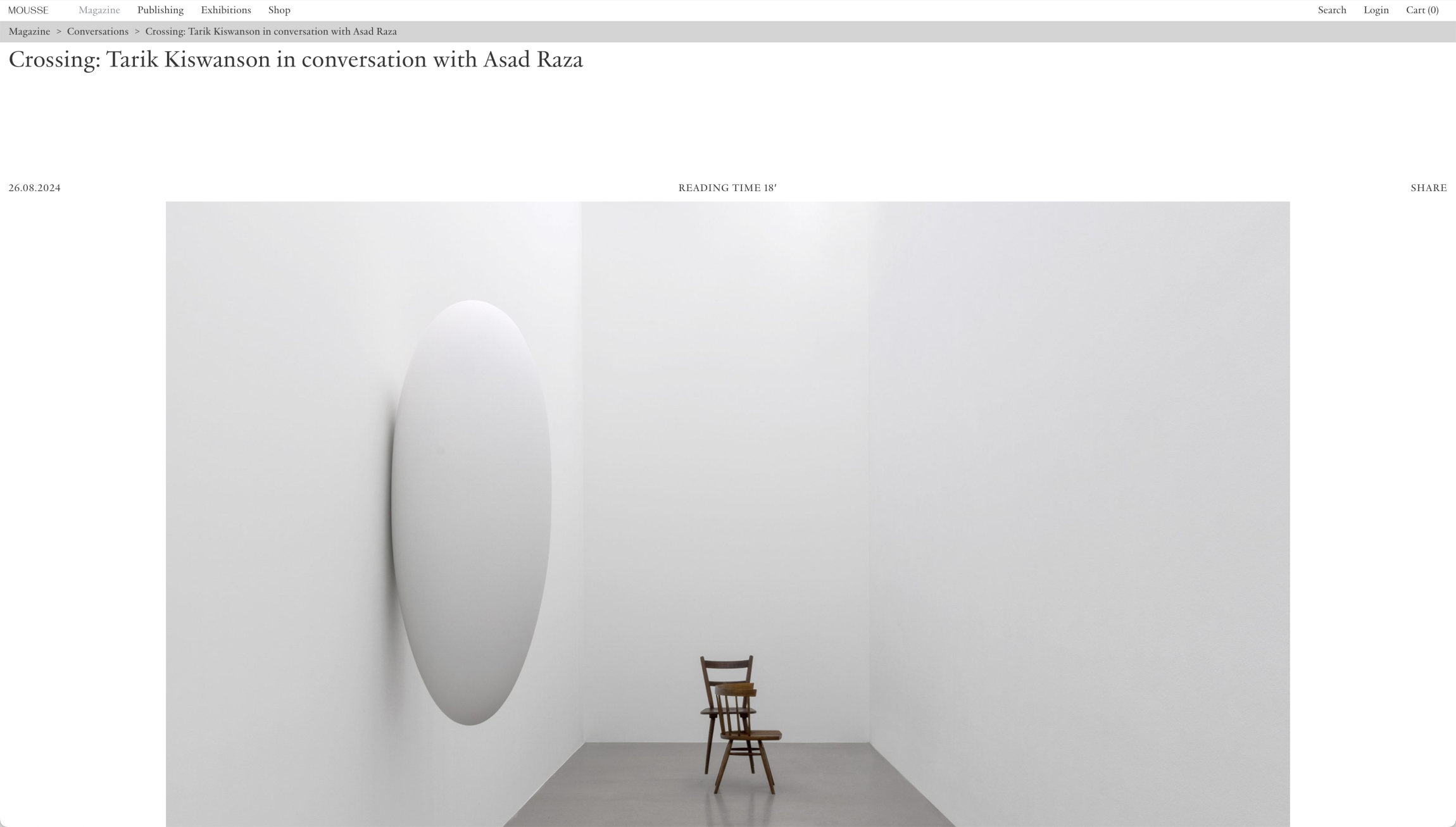
"On the occasion of Tarik Kiswanson’s exhibition A Century at Portikus, Frankfurt, he sat down with artist Asad Raza—who also had a solo show, Diversion, at the same venue in 20221—for a rich conversation that reveals the intertwined nature of their artistic practices and philosophical outlooks. Fresh off a plane from New York, Kiswanson reflects on his recent work and the meaningful collaborations that have shaped it. In a dialogue spanning from Edward Said to Édouard Glissant, Kiswanson and Raza exchange ideas about art at the intersection of space and identity. They discuss embracing medium fluidity, the importance of allowing research to go beyond language and acceptance of the unknown in seeking to articulate the complexities of human existence in present reality."

"“Another exhibition at another foreboding historical moment” says the invitation card to Walid Raad’s exhibitions at Sfeir-Semler galleries in Karantina and Downtown. Raad’s artworks have time and again engaged such moments and what they make evident, possible, probable, thinkable, sayable, and imaginable."
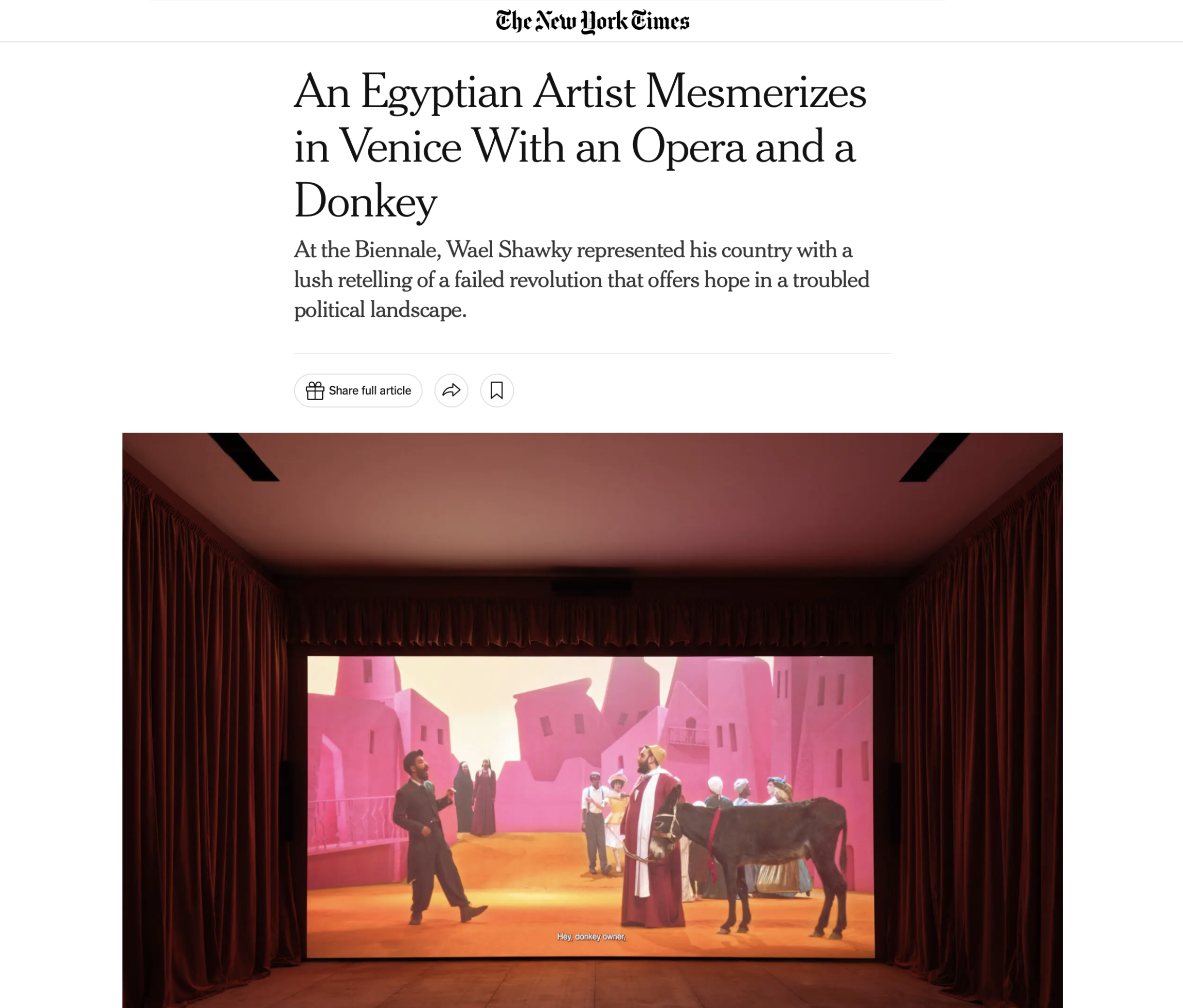
"At the Biennale, Wael Shawky represented his country with a lush retelling of a failed revolution that offers hope in a troubled political landscape."
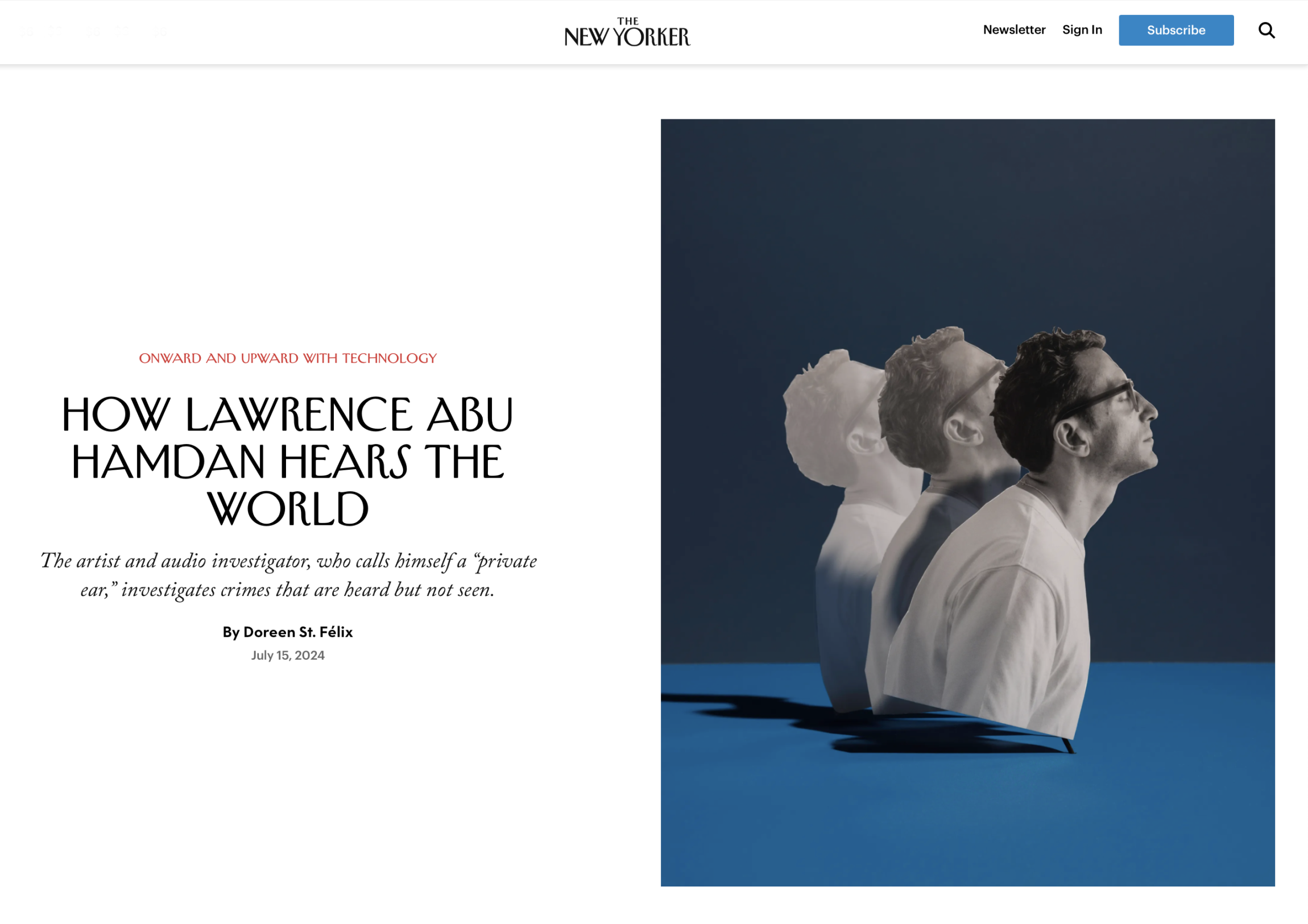
"In January, Al Jazeera English aired a segment with a sound analyst named Lawrence Abu Hamdan. He was asked to assess a video that had gone viral online. In the clip, a woman wearing a hijab claimed to be a nurse at a hospital in Gaza. She said that Hamas was attacking the hospital and ransacking its supplies. The sound of bombs could be heard in the background..."